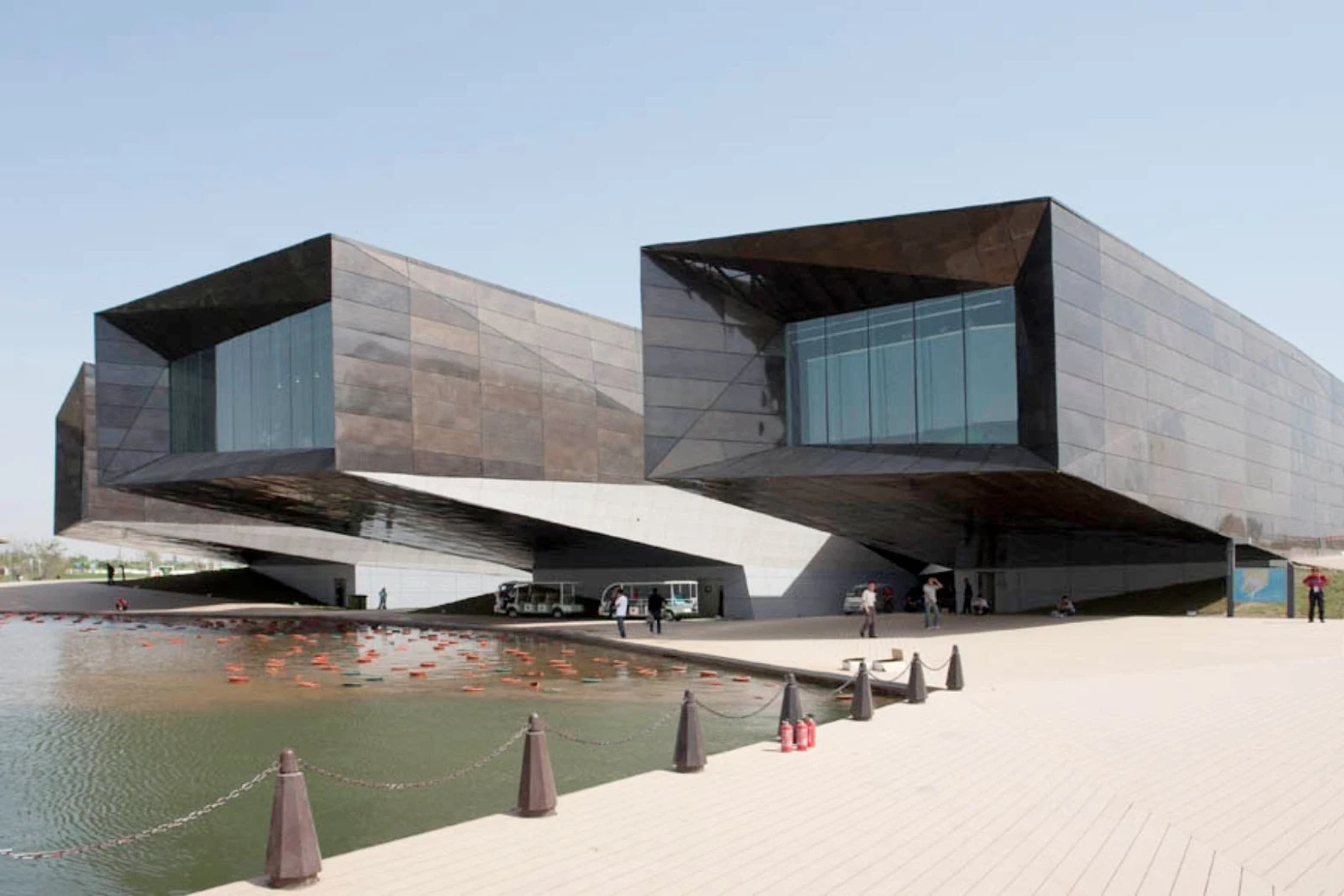
The International Horticultural Expo becomes instigator and core for the redevelopment of a large area between the airport and the ancient city centre of Xi’an, known as the home of the Terracotta Army and business centre of the vast Chinese interior. The proposal comprises of a 5000 sqm Creativity Centre, a 4000 sqm Greenhouse and the 3500 sqm Guangyun Entrance bridge sitting in a 37 ha landscape that will house the International Horticultural Expo and a park for Xi’an City as legacy.
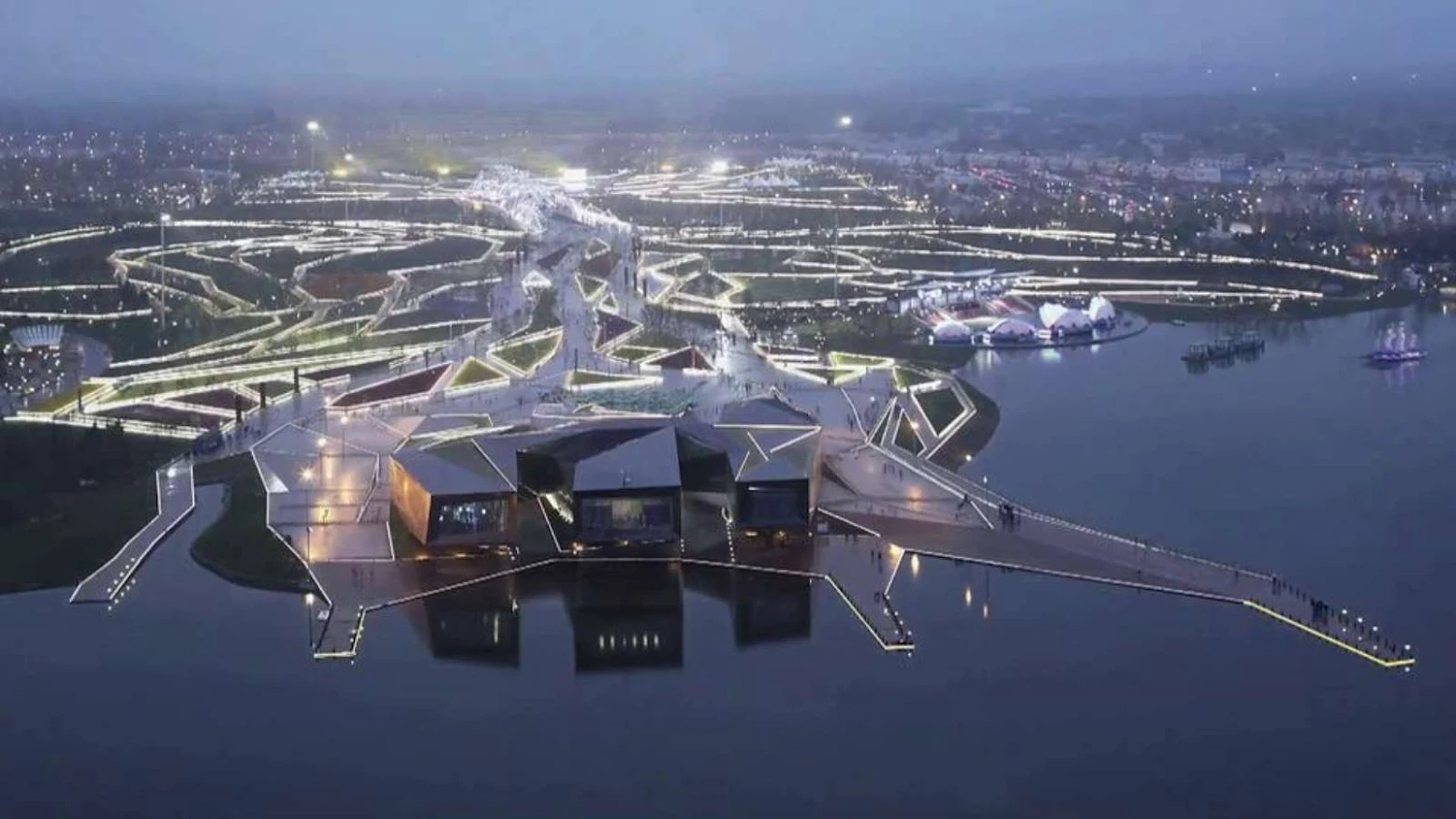
Flowing Gardens unfolds many sinuous paths, creating a network of intermingling circulation, landscape and water. The given topography and its existing slopes were used to draw out the paths in a way similar to how roads ribbon around a mountain, negotiating steepness with gradients. These paths vary in width ranging from main walkways and arteries to towpaths. The patches between these paths become the zones for various planting types and wetland areas, which retain a quality of ease of maintenance. Plasma projected three buildings, located at the intersections of the major pathways are developed as the nodal articulation and intensification of the landscape.
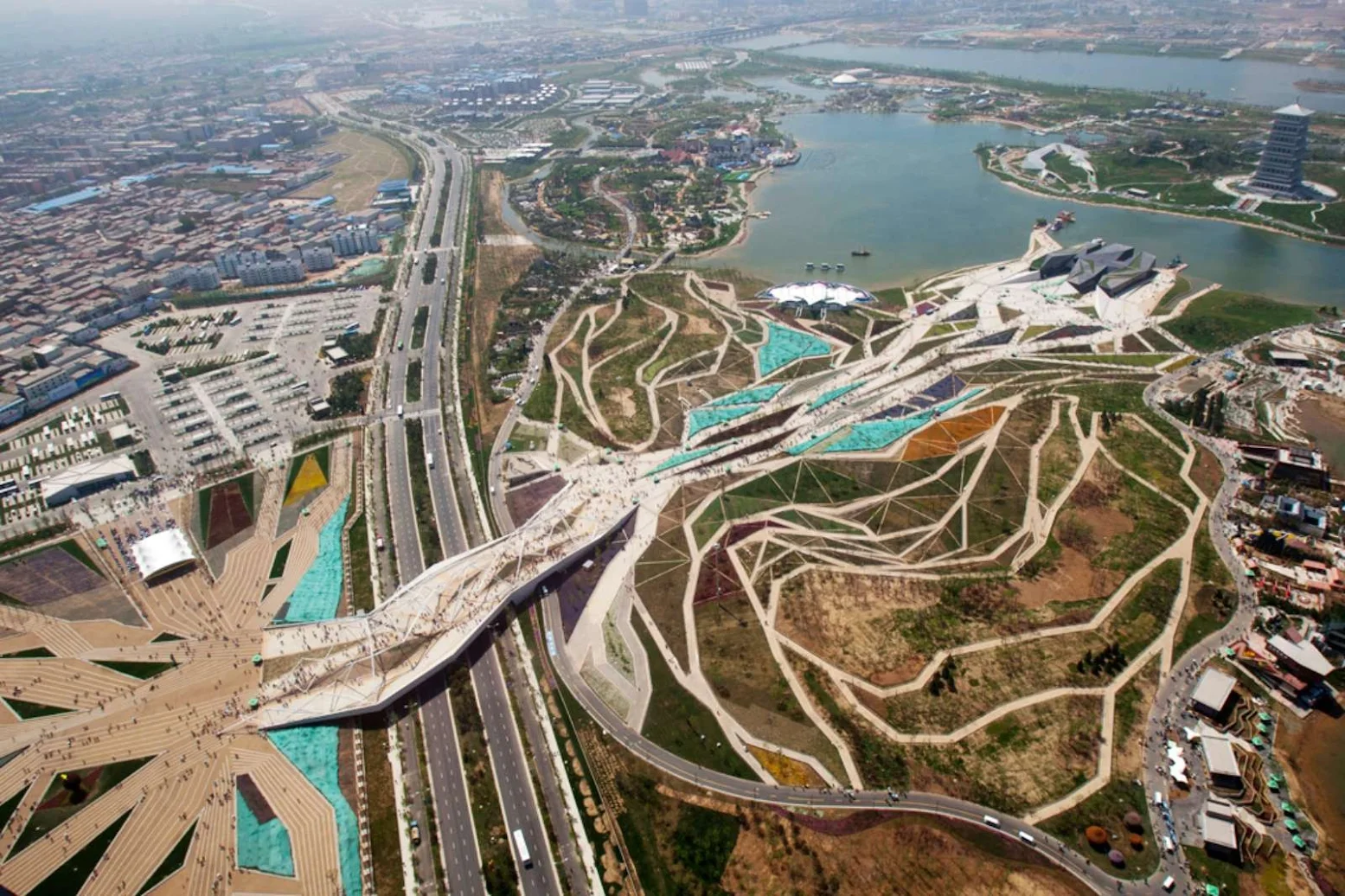
The project proposes a hybrid of both natural and artificial systems, brought together as a synergy of waterscapes. With consideration to the amount of water required for irrigation, the project seeks to introduce various technologies and designs found in nature, but it is enhanced to meet the specific needs of the new population. Rainwater is collected and channeled into the wetland areas, where natural plants and reed beds clean and store the water, which is then later dispersed and used for irrigation. These integrated wetlands and ponds are also to be enjoyed by the visitors as oasis and points of personal tranquillity.
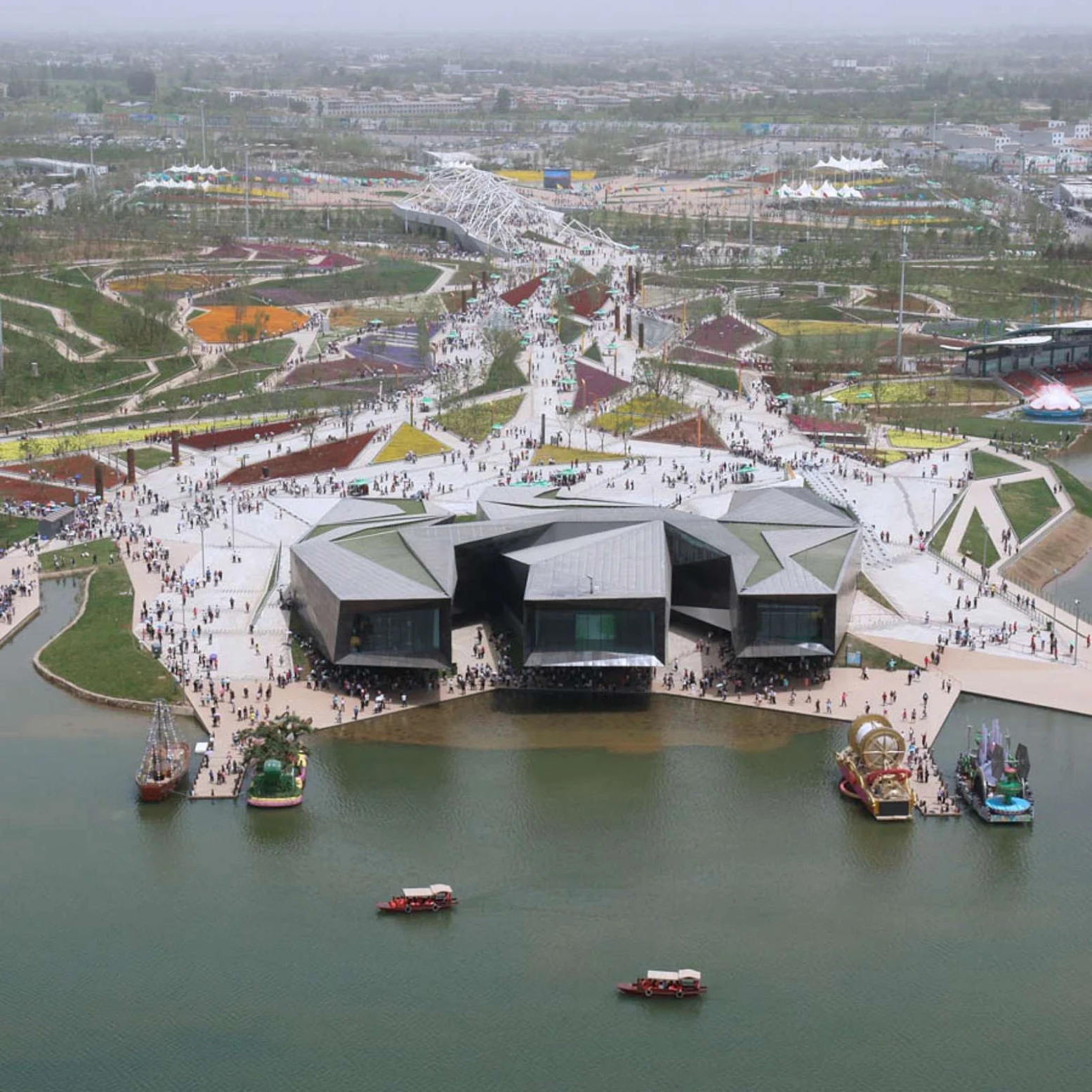
More complex water cycle issues are sensitively controlled with the introduction of grey and black water treatment systems. The proposal aims to make use of the initial investment and organization during the exhibition, to set up an environment, which becomes autonomous in function and character. The gardens transform the artificial and natural conditions of the site into a sustainable system that becomes increasingly more maintenance-free once the exhibition is over, allowing the park to develop into a new model, or paradigm, within the horticultural industry.

The park area manifests in a variety of scales in association with very specific planting, surfacing and lighting, thus providing a sandbox of experiences that ranges from the very intimate with semi-enclosed, shaded, self contained, one- to-one spaces, to the very public with communal plazas formed by wider pedestrian paths with full exposure to the sun and a direct, uninterrupted visual link to the main hiatus on the site. The Guangyun Entrance operates on the level of infrastructure and fulfils the role of bridging over the main road that dissects the site. Thus it channels the visitors from the entry plaza, where they congregate and orient themselves after having entered into the Expo and sets them into a definite direction.
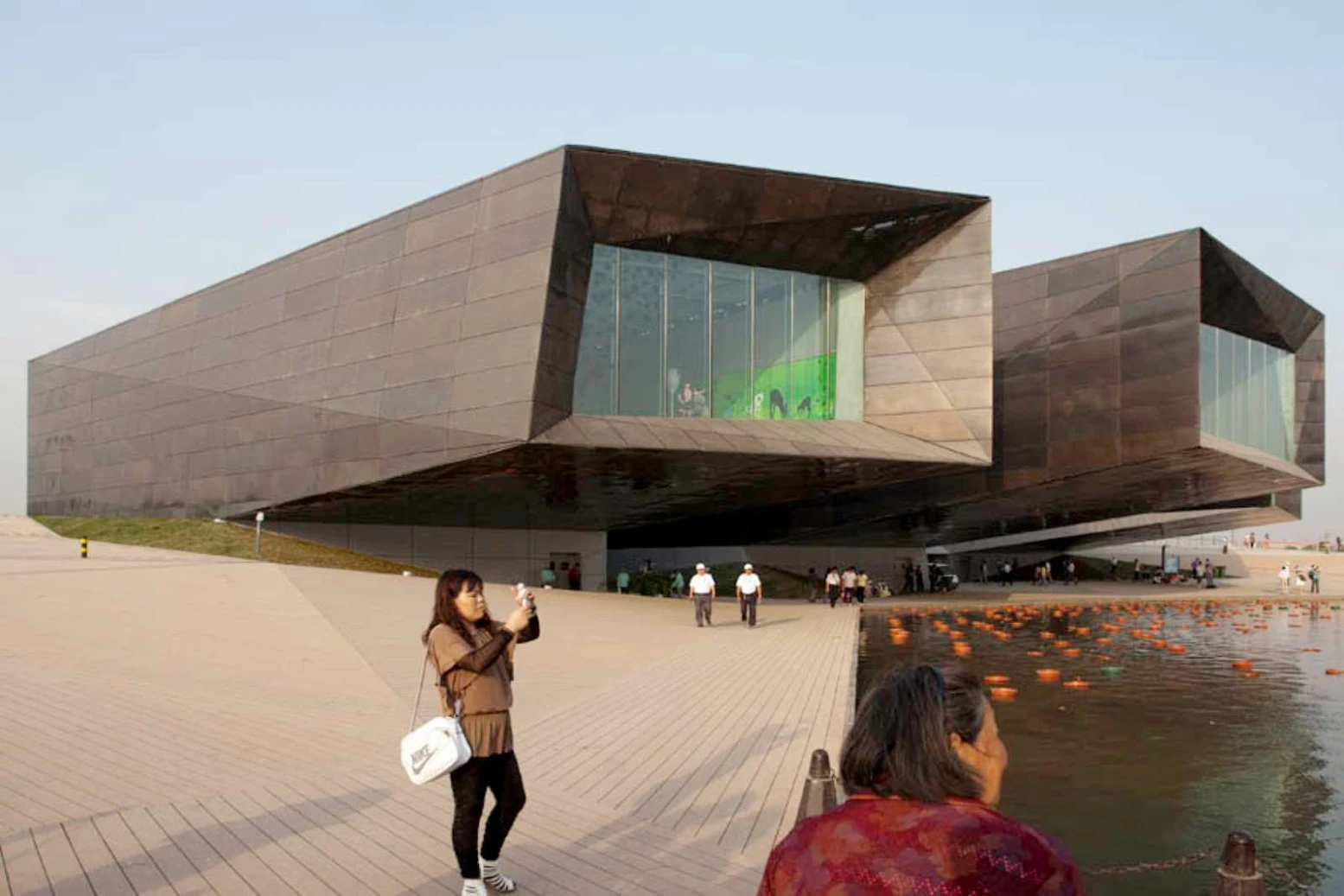
By bringing them up to +7.00 m the bridge offers vantage points from where to gain an overview of the different zones of the Expo ahead. Functionally, the bridge needs to have two lanes for incoming and outgoing traffic. Naturally, these flows are very uneven and change greatly between the beginning and end of the day. Taking the idea from the London Underground escalators we devised the bridge to have three lanes, where the middle lane switches from the incoming direction in the morning to outgoing later in the day. The three bands read as interwoven braids, and together with a trellis roof structure give the appearance of bands of landscape peeling off and turning into structure.
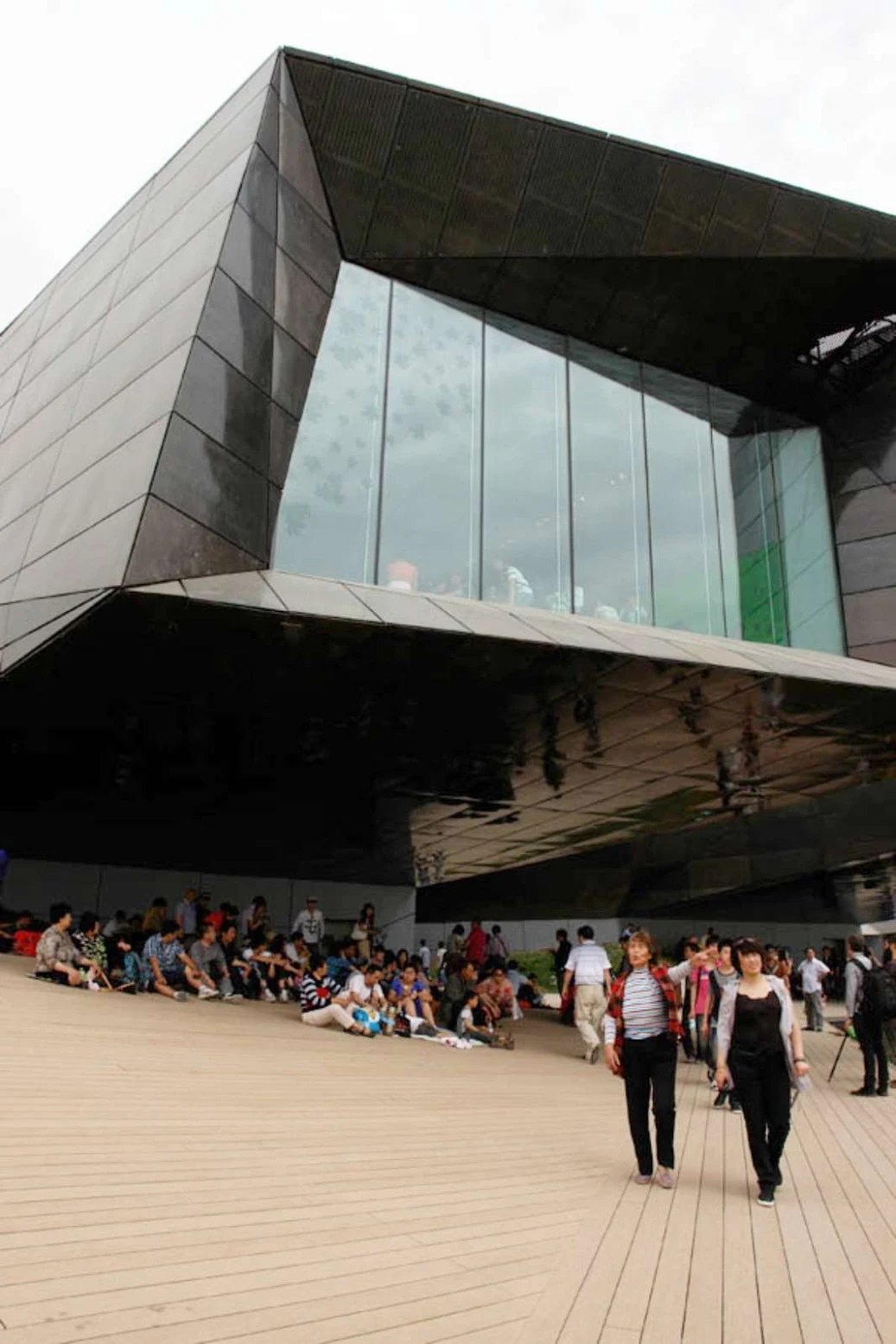
Between the three bands are green areas and a water feature for visitors to stop, have a rest and enjoy the view. Above them an open trellis steel structure forms a shading device that becomes overgrown with climbing plants forming a green roof, and suggesting to distant onlookers the theme of the Expo. For this lightweight roof, we developed together with Arup an innovative tensegrity structure that appears as beams seemingly free-floating in space. The Creativity Pavilion is located on the edge of the lake as the endpoint to the central axis that starts with the Gate Building, and is the starting point for the water crossing by boat.
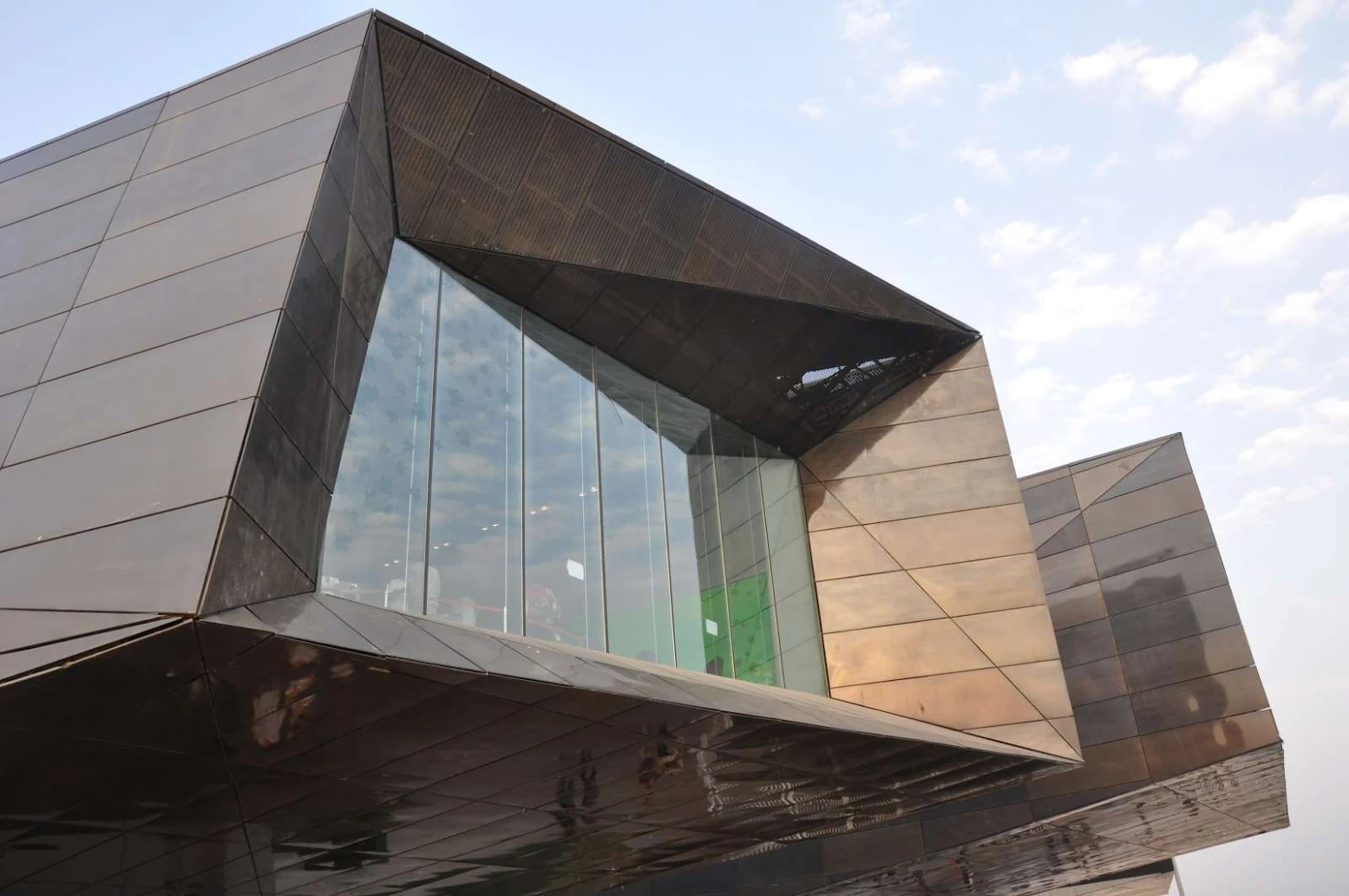
It ties in with a series of piers that follow the landscape jutting out into the water. The built volume is interwoven with the articulating ground, producing continuities on many levels integrating the landscape and building together. From this flows the organization of the building massed as three parallel volumes within the landscape, flowing through and underneath, leading to the piers, the volumes themselves hover as cantilevers over the lake. The fluid experience of passing through the landscape continues inside, where all zones are generous and interconnected. Inside, the use of ramps enables visitors to move up to the mezzanine level and out onto the roof of the building.
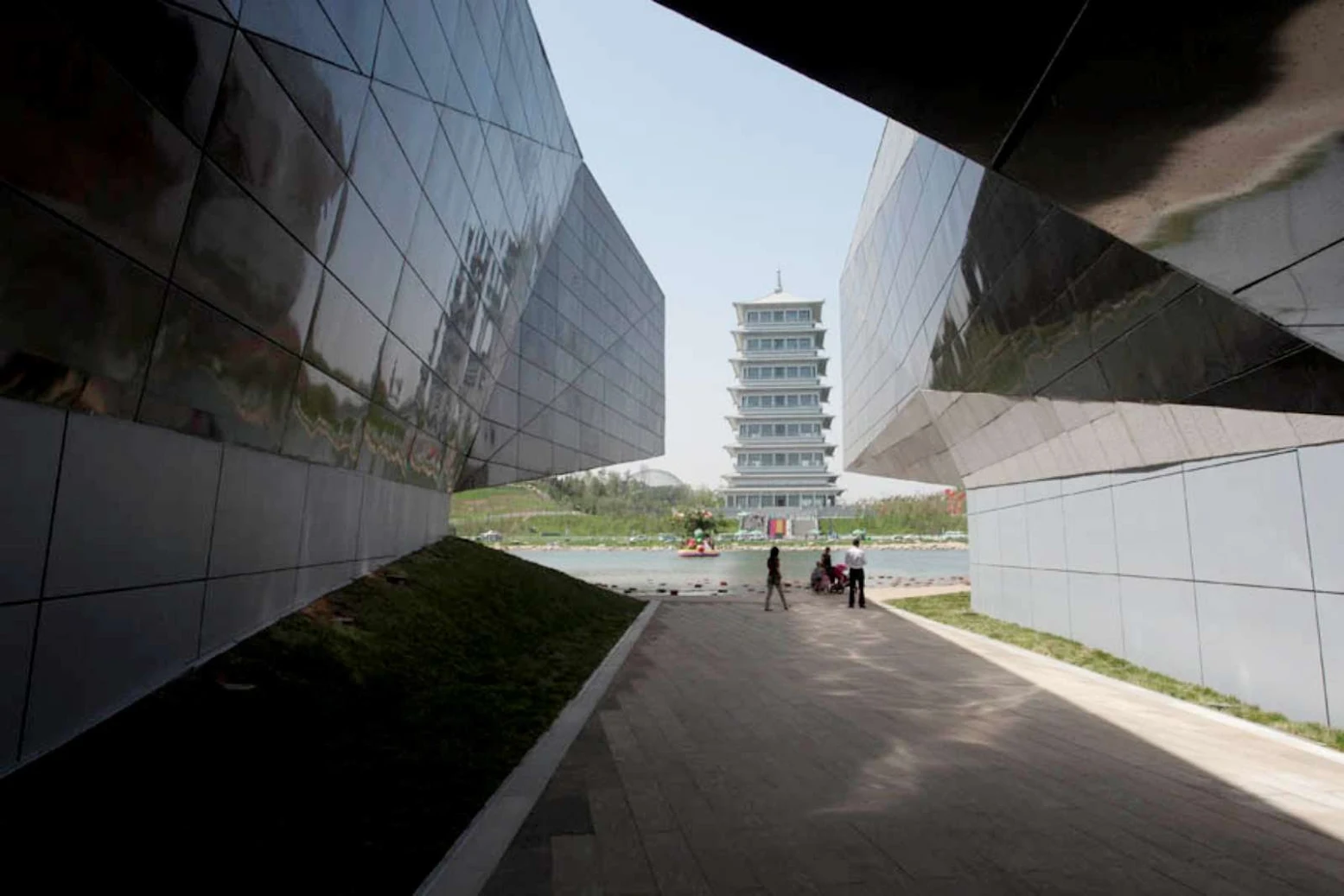
Through its materiality the building again manifests itself as an extension of the ground with its floors and interior walls made from concrete and bronze is used as expression of local identity. The Greenhouse is formed as a precious crystal, semi-submerged in splendid isolation reached by boat across the lake followed by a short walk from the shore. The greenhouse blends into the hillside even more so than the other two structures. The building is entered through a prolonged cut, literally scooped up from the ground, emerging within a light-filled cavernous reception space.
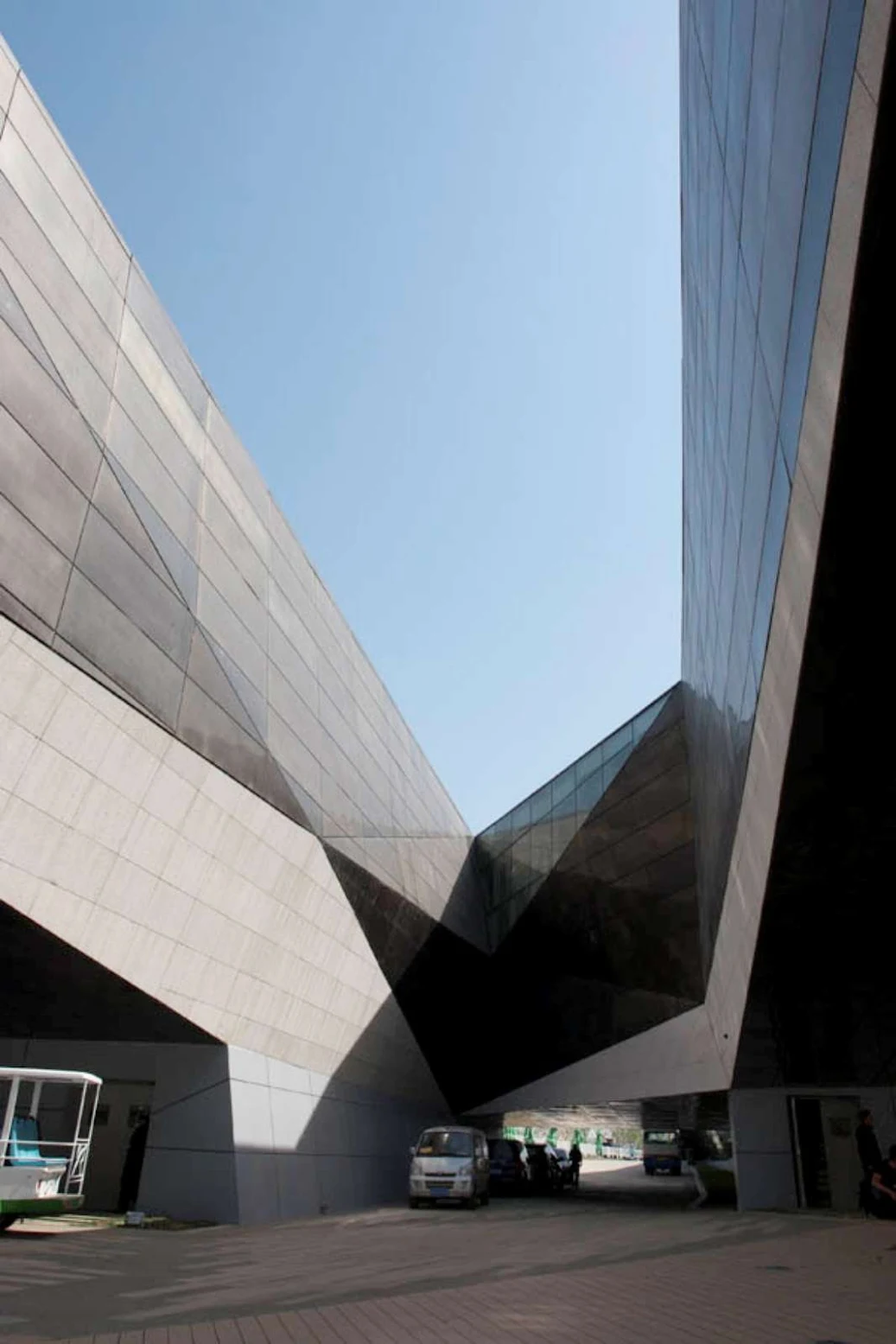
From here the visitor passes along a tessellated mesh of paths through three different climatic zones with corresponding plant environments. The greenhouse has a horseshoe plan creating a loop that changes radically in section to accommodate a sequence of different planting and spatial conditions. With the ground inside and out, gradually changing in relation to each other, the visitor experiences sequences of visual enclosure alternating with long vistas out and across. The horseshoe shape also generates an inner courtyard of outside space, making it the natural centre of the building and creating a three-dimensional interweaving of interior and exterior circulation. Text by Plasma Studio
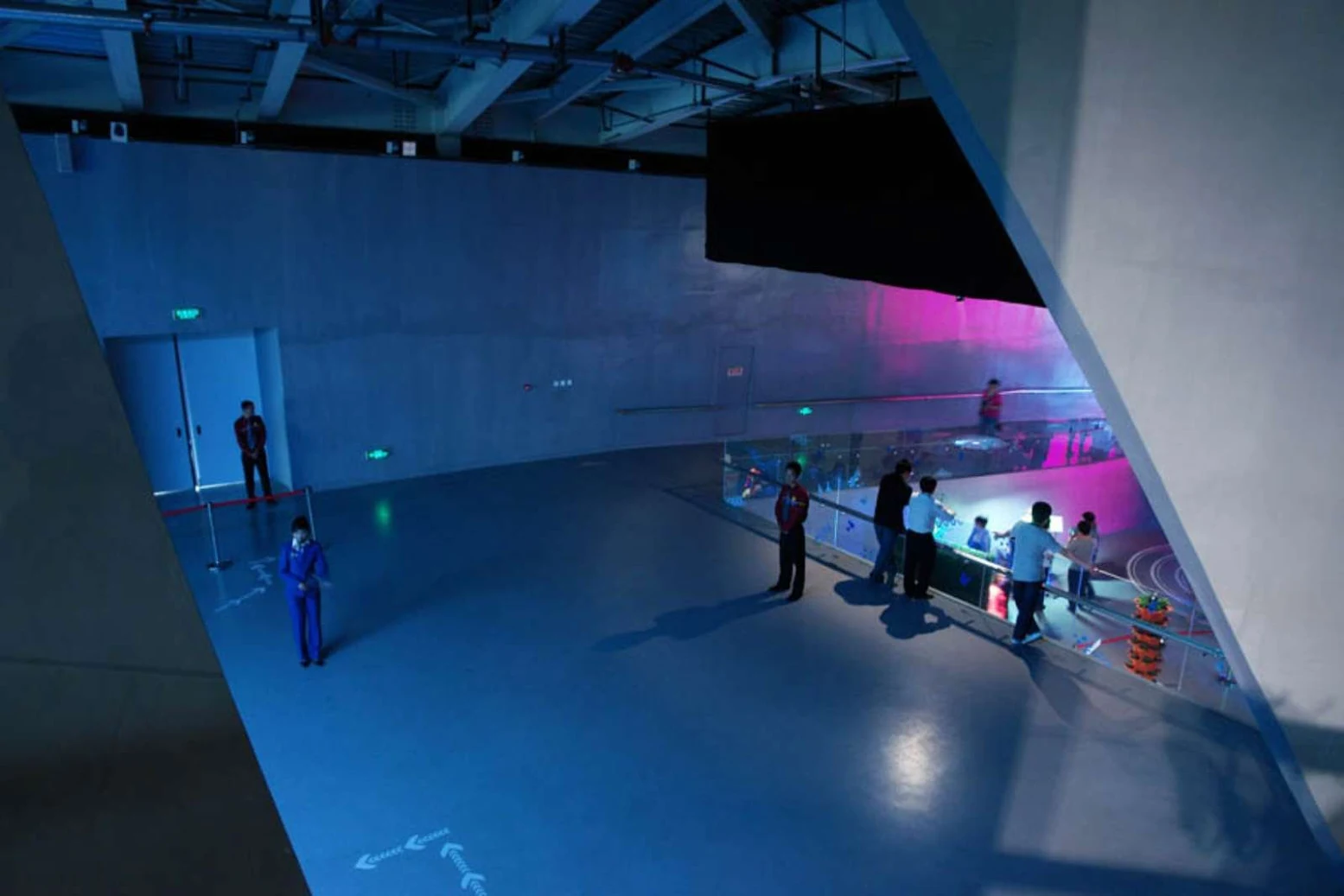

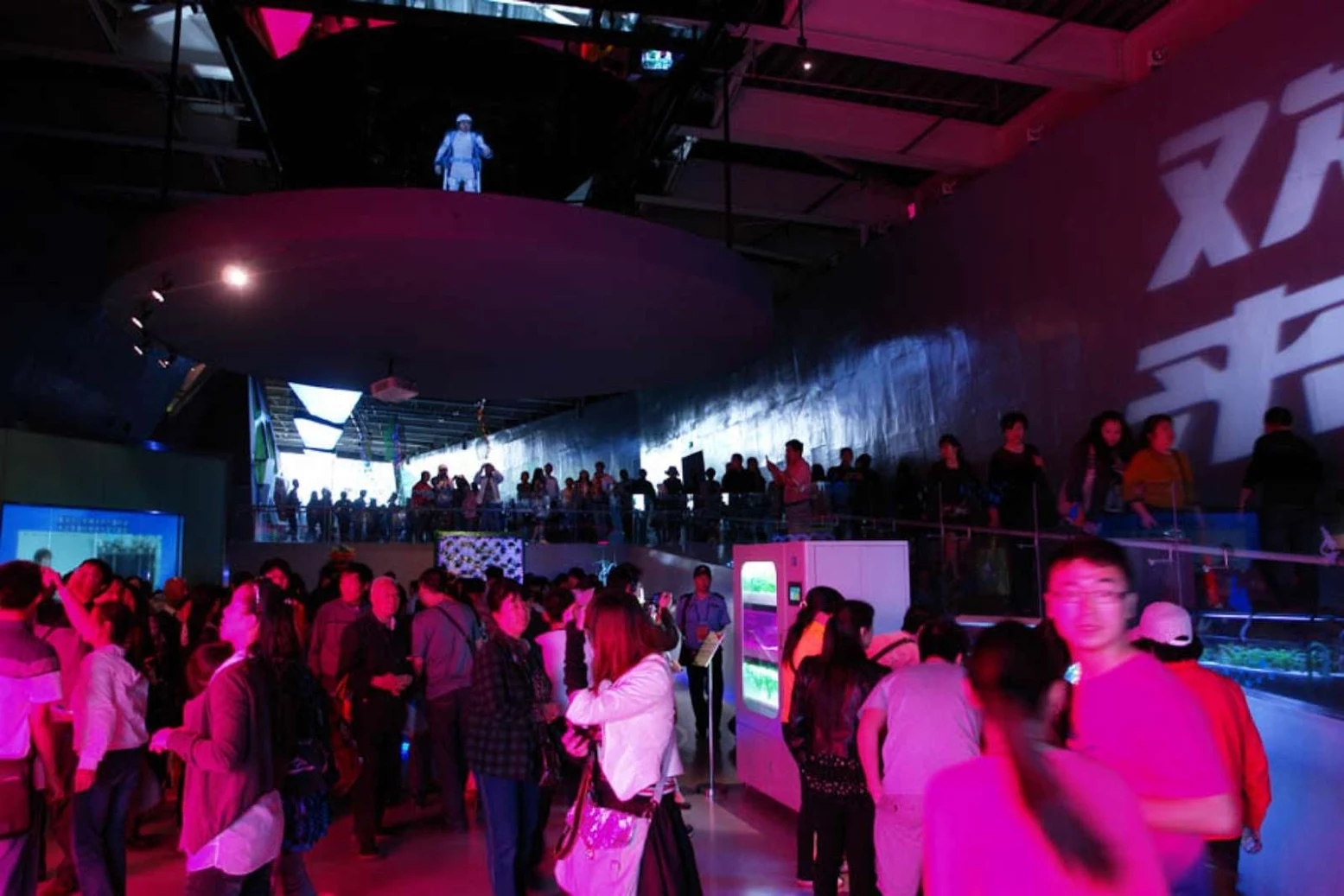

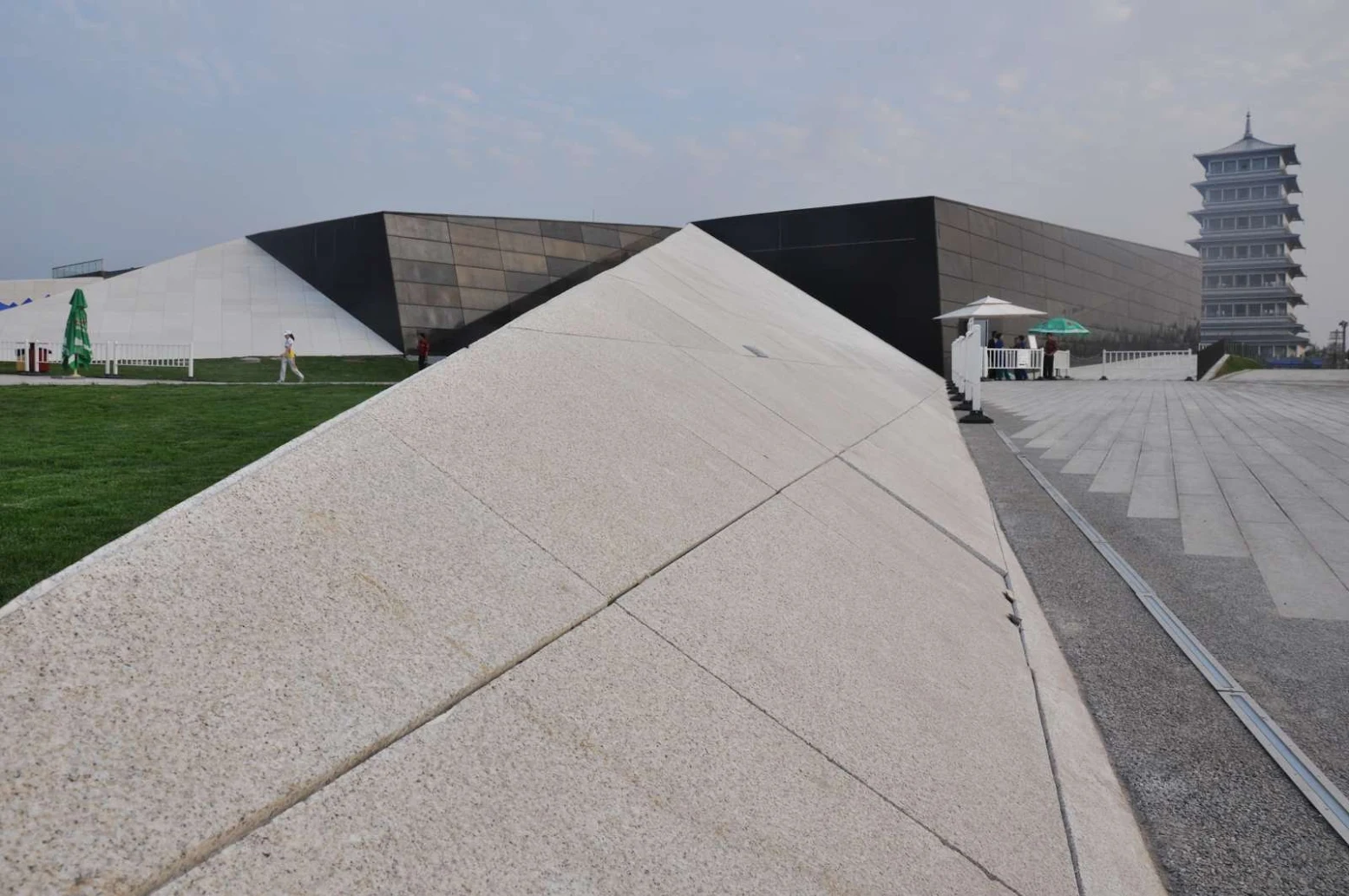
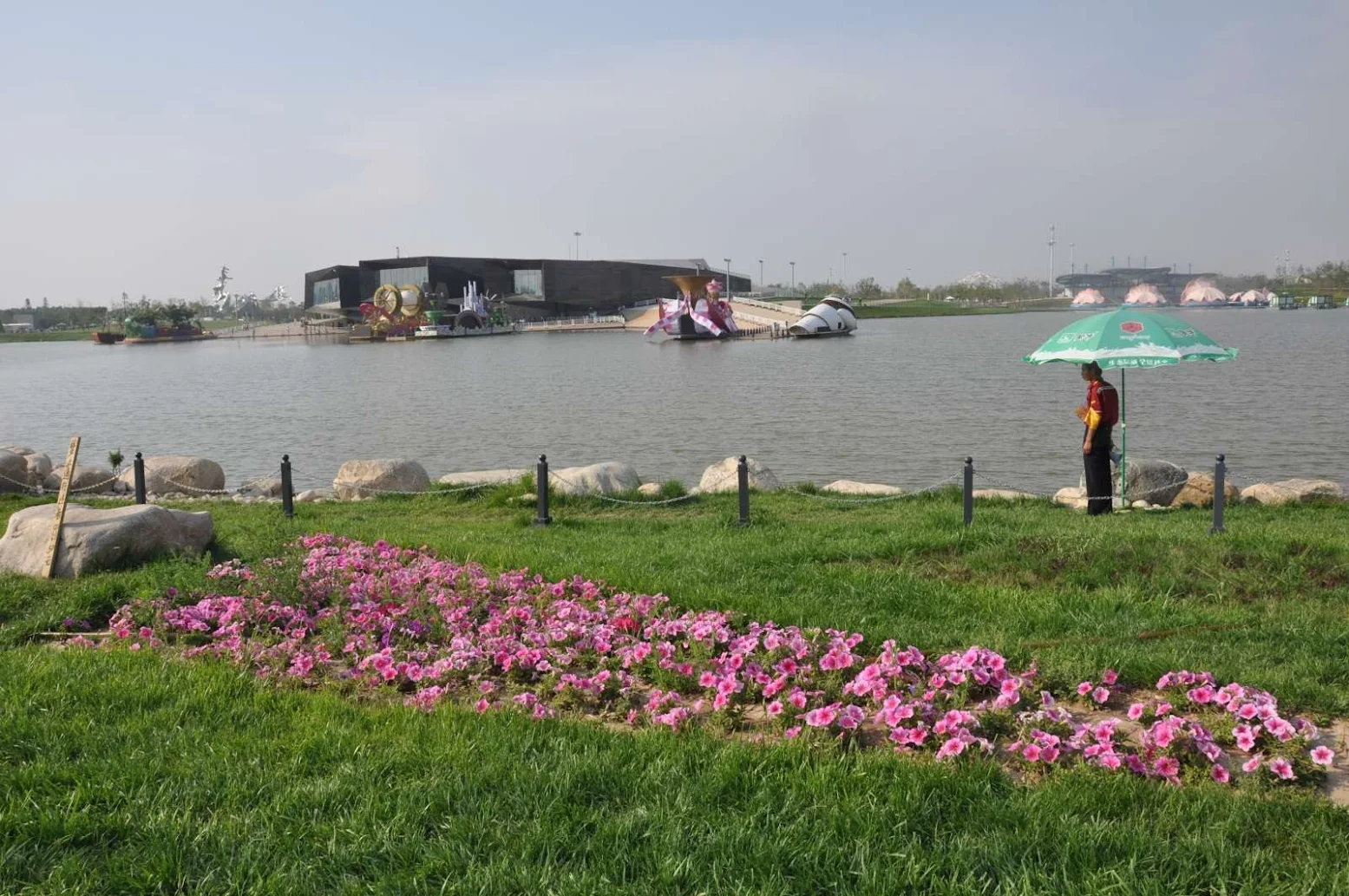
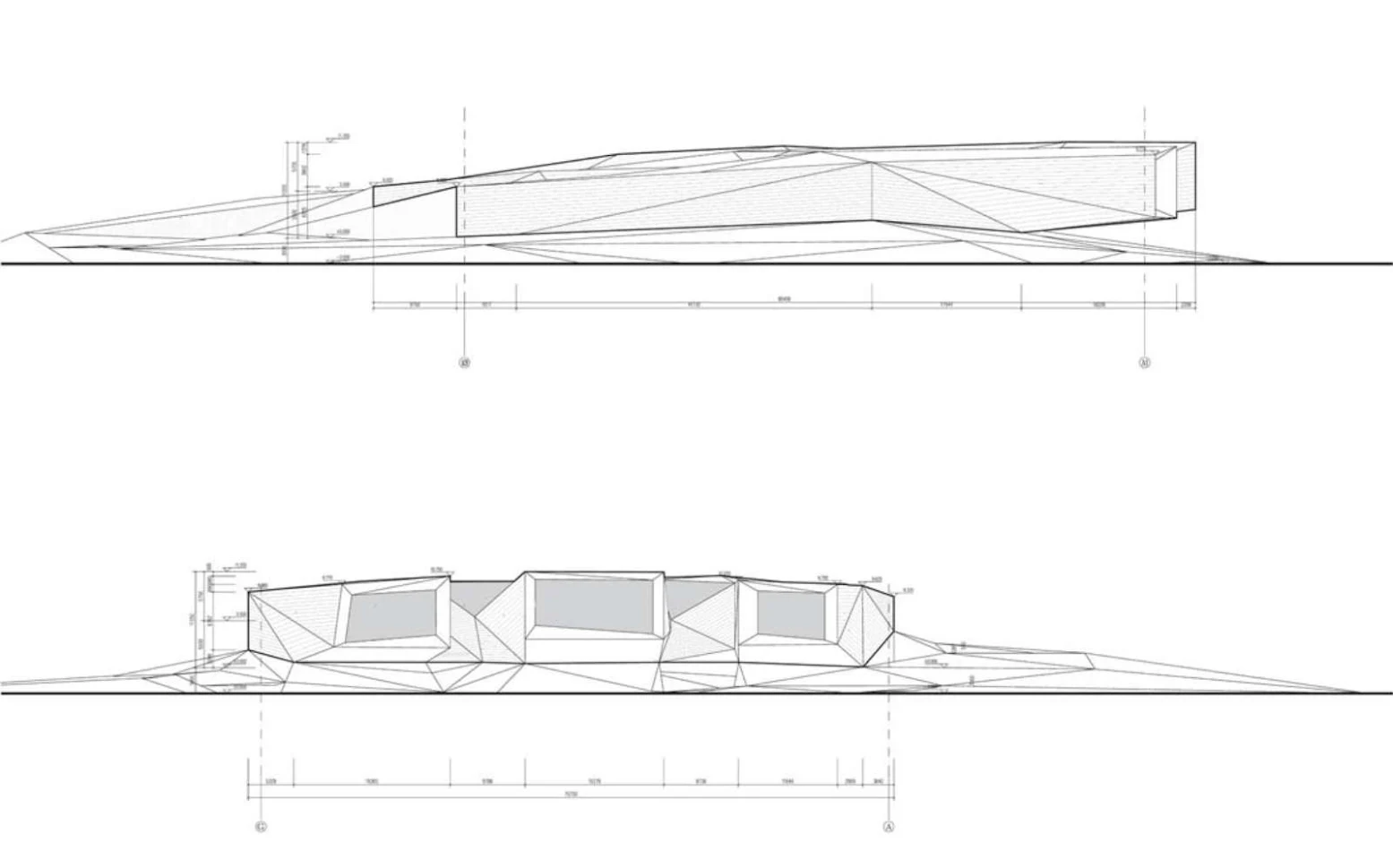
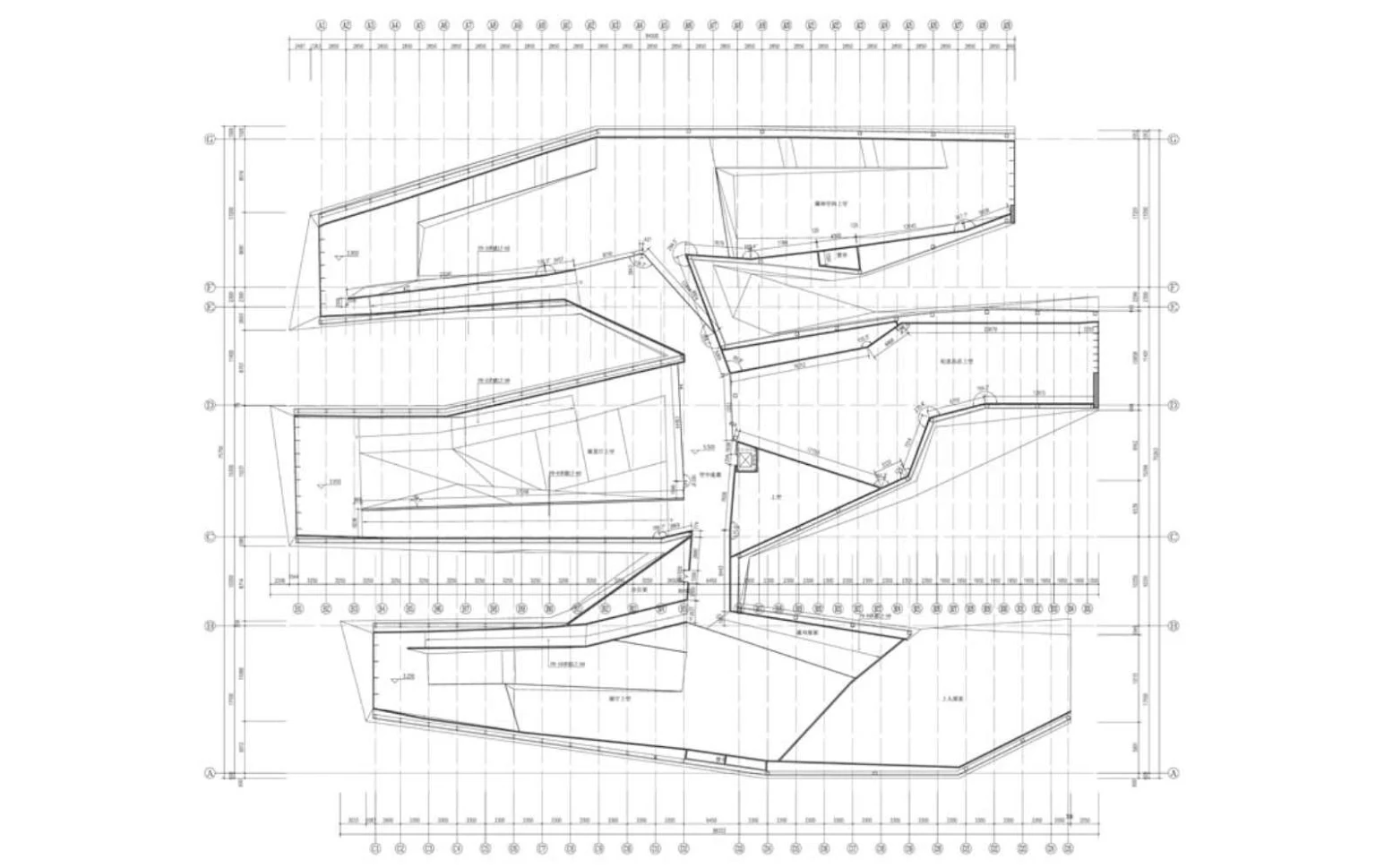

Location: Xi’an City, China Archiects: Plasma Studio Design Consultants: Beijing Institute of Architectural Design (BIAD) Structural Engineering: ARUP London, John Martin and Associates, Los Angeles Landscape: Groundlab (Eva Castro, Holger Kehne, Sarah Majid, Alfredo Ramirez, Eduardo Rico) Project Team: Eva Castro, Holger Kehne, Mehran Gharleghi, Evan Greenberg, Xiaowei Tong with Tom Lea, Ying Wang, Nicoletta Gerevini, Peter Pichler, Benedikt Schleicher, Katy Barkan, Danai Sage, Federico Ruberto Site area:37 Hectares Area: 17000 sqm Date: 2011 Client: Chan Ba Ecological District